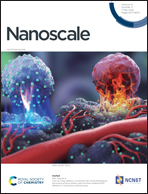Controlling the fate of regenerative cells with engineered platelet-derived extracellular vesicles†
Abstract
Extracellular vesicles (EVs) have emerged as cell-free nanotherapeutic agents for the potential treatment of multiple diseases and for tissue engineering and regenerative medicine strategies. Nevertheless, the field has typically relied on EVs derived from stem cells, the production of which in high quantities and high reproducibility is still under debate. Platelet-derived EVs were produced by a freeze–thaw method of platelet concentrates, a highly available clinical waste material. The aim of this study was to produce and thoroughly characterize platelet-derived EVs and understand their effects in adipose-tissue derived stem cells (hASCs), endothelial cells (HUVECs) and macrophages. Two different EV populations were obtained after differential centrifugation, namely small EVs (sEVs) and medium EVs (mEVs), which showed different size distributions and unique proteomic signatures. EV interaction with hASCs resulted in the modulation of the gene expression of markers related to their commitment toward different lineages. Moreover, mEVs showed higher angiogenic potential than sEVs, in a tube formation assay with HUVECs. Also, the EVs were able to modulate macrophage polarization. Altogether, these results suggest that platelet-derived EVs are promising candidates to be used as biochemical signals or therapeutic tools in tissue engineering and regenerative medicine approaches.



 Please wait while we load your content...
Please wait while we load your content...